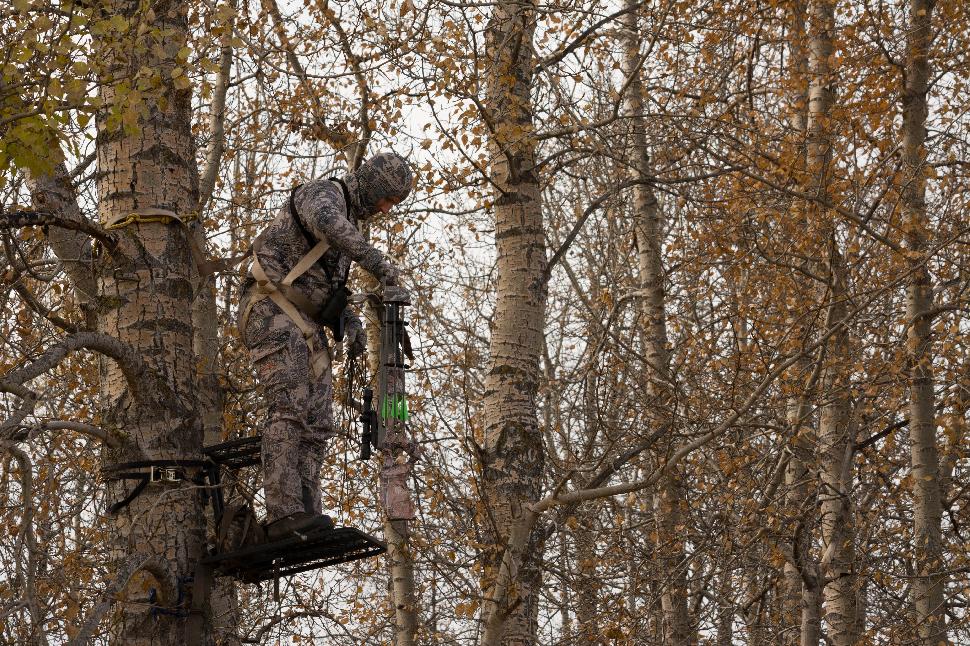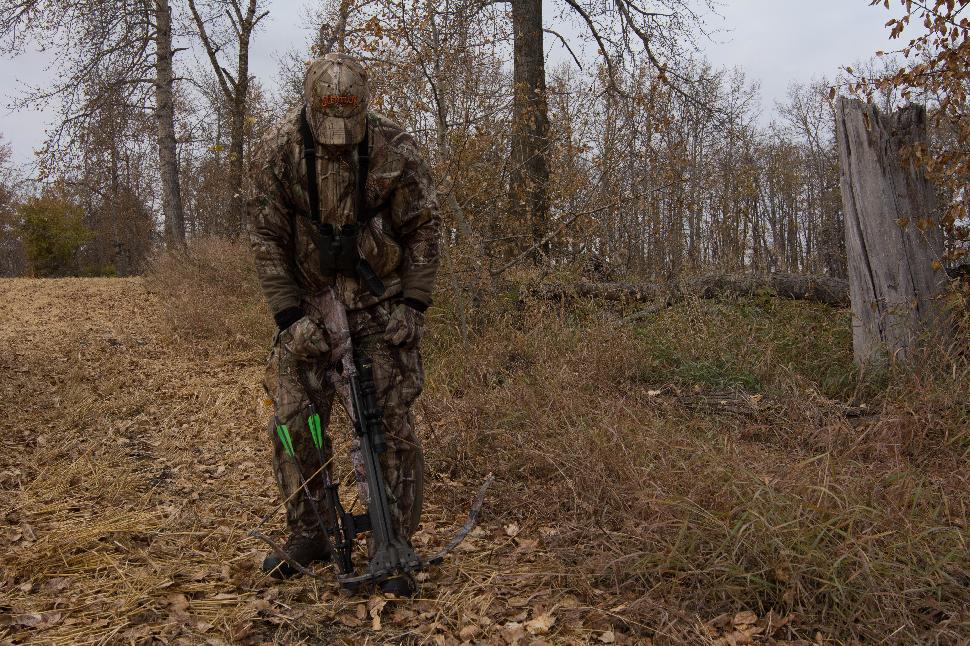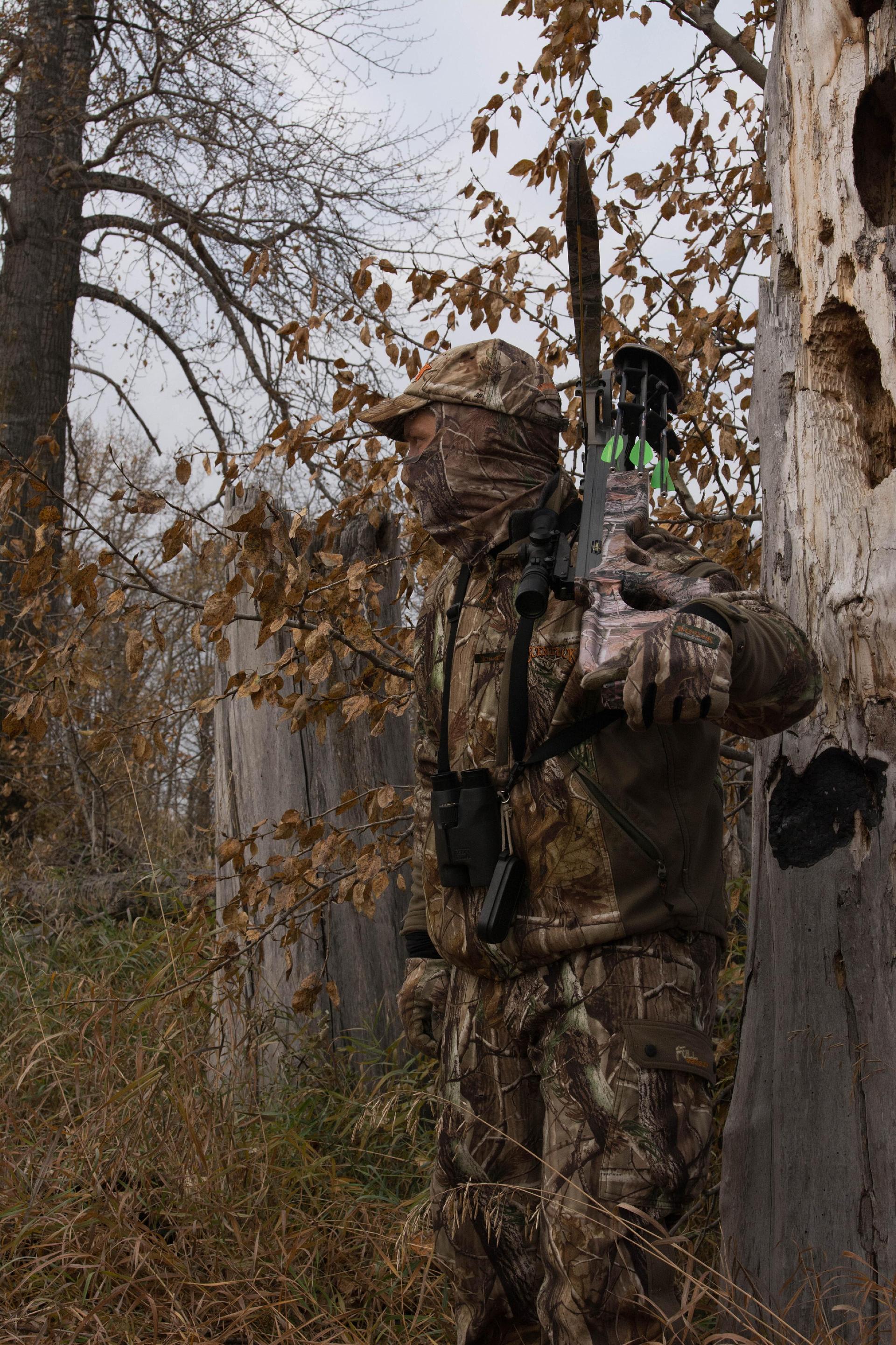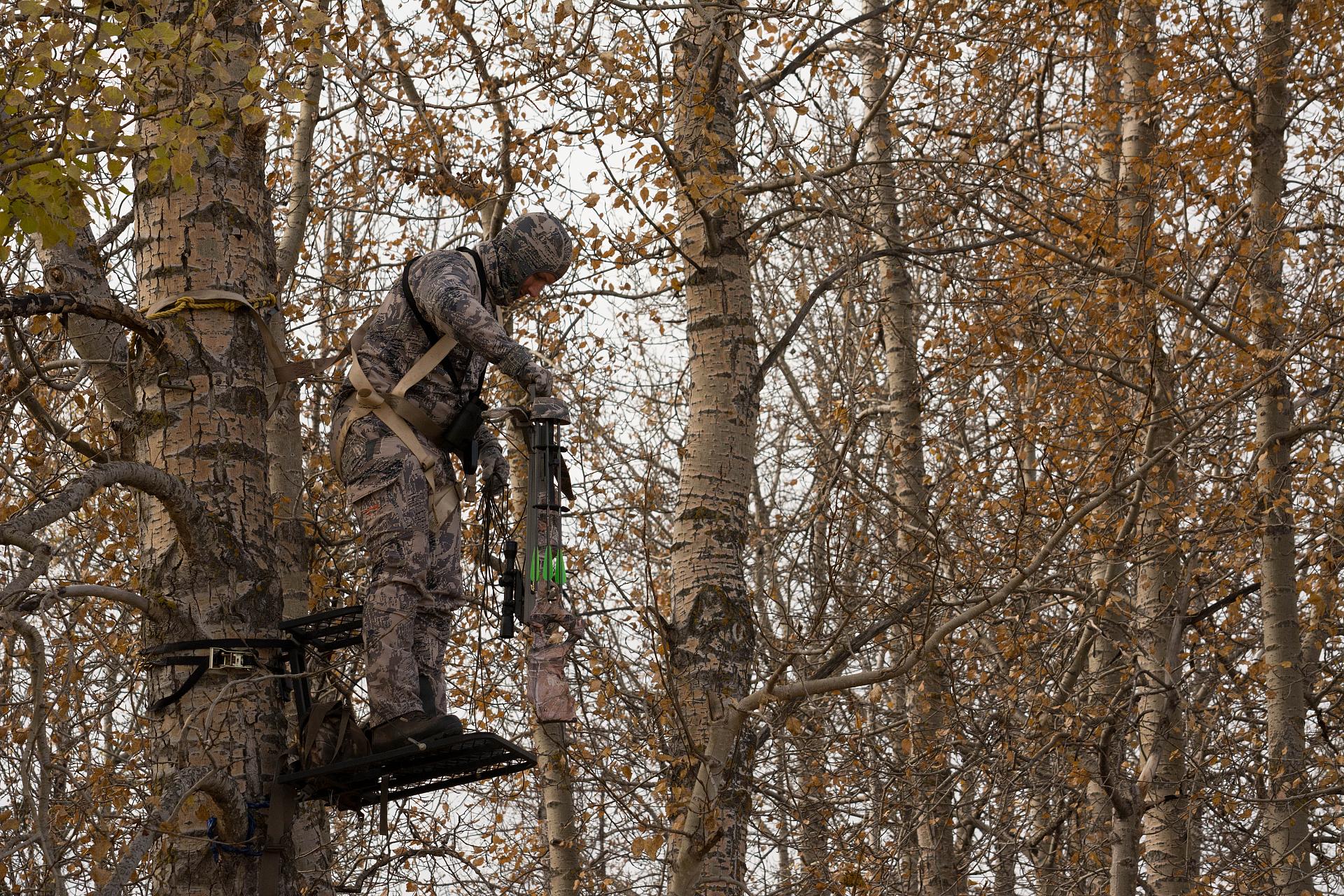Crucial safety tips for crowbow hunters
Avoid accidents and gear failure with these safety and maintenance tips
Advertisement
Hunting takes effort and time. On average, the more effort and time committed, the more shot opportunities you will have. But whether you have a single shot or multiple shooting chances during hunting season, weapon failure at the moment of truth, or worse, an accident involving your weapon, is something every outdoorsman should avoid. Any weapon requires routine maintenance and a crossbow is no different. Since a crossbow has both gun and bow parts, it has twice the maintenance. Maintenance, storage and safety are simple and will ensure you keep hunting with your crossbow for many more years.

Stock
Advertisement
As I mentioned in crossbow anatomy, the bow is mounted perpendicular to the stock. The stock, like that of a rifle, should be cared for in the same way. Gun oil should be used for any mechanical parts and the body, rail and arrow track should be rubbed with oil to protect it from weathering elements. Inspecting the safety/trigger mechanism after each hunt should become routine for any crossbow hunter, however, never do this with the crossbow cocked, a dry-fire could occur and those are unpredictable and can damage a crossbow. The arrow track and rail requires some additional lubricant designed for crossbows only. Because the bow string slides along the rail, string wear will occur rapidly. To help prevent this and avoid premature breakdown of the string, rail lube must be applied every 5-10 shots during normal operating conditions. When hunting wet and cold weather, it should simple be re-applied after cleaning and wiping down the crossbow.
String
The crossbow string is vital and in order to extend its life, it must be maintained with a silicone based string wax. Wax applicators are inexpensive (as opposed to replacement strings) and should be used after five sessions, or more if the string appears fuzzy. Run the applicator along the entire length of your string and then rub it into the string fibers. Also wax the bus cable if you have a compound model. The only place I do not apply wax is on any area that has string serving. Wipe off any excess wax afterwards as this adds additional weight to your string, albeit small, can affect your arrow speed. Every six waxes, try cleaning the string first before applying new wax. Take a six inch strand of string or dental floss and loop it around the string and hold both ends and with a see-sawing motion, slide the strand along the length of the string. The used dirty wax will come out from the string – discard and re-apply new wax as above. Replace any strings that are frayed.
Advertisement
Cams and limbs
Inspect your crossbow’s cams and limbs regularly. In the past, I can tell by different sounds that appear when something is not correct with my crossbow. Excess vibration, different or louder sounds and unpredictable accuracy are all symptoms of a crossbow that needs a thorough inspection.
Arrows
Arrows should also be inspected before shooting. Spin tests ensure straightness, which helps with accuracy. Flexing the shafts of carbon arrows into a half moon shape by holding both ends ensures the spine is not damaged and can withhold the energy transfer from the string when released A damaged arrow shaft is dangerous to fire, so discard immediately so the arrow is never used by accident.
Spanning
To span a crossbow, your foot should be firmly placed at the stirrup to avoid the crossbow to slip and hit you in the face. To avoid your crossbow from being cocked unevenly, try to get the right and left side at equal distance of the stock. This prevents the crossbow from shooting with reduced accuracy. A cocking device (either mechanical or rope) helps immensely with this and is highly recommended. I never span my crossbow without one.
Once spanned, ensure the safety is on. One excellent feature I like about my MXB-400 mission model is that the safety is automatically engaged (anti dry-fire) when locking the string in place and cannot be moved until an arrow is seated (preventing a dry fire from ever occurring). Before seating an arrow, check the nock thoroughly. Never fire a crossbow with a broken or cracked nock. While keeping the stirrup on the ground, place on arrow on the arrow track and slide it, nock first, towards the string.

To unloaded (un-cock) a crossbow you must read the manufacturer’s directions specific to your model. Some allow using a cocking device in reserve to un-span the crossbow, while other insist on fire a shot to unload it. I have done both with different models and firing is a lot quicker, however louder and requires you to swap out the broad head for a field tip.
I usually hunt in an ambush style, so I never span my crossbow until I reach my location. Whether it’s a blind, a field edge or especially a tree stand, too much can go wrong with the crossbow energized. Remember to handle your crossbow with utmost care as it is a lethal weapon. Hunting safety practices should always be followed with a crossbow, all the ones that apply to any type of hunting such never points your crossbow at anything you don’t intend to shoot and keep your safety on and finger off the trigger until you are ready to shoot. Some additional crossbow specific safety tips include: do not lay your crossbow on the ground when cocked, this is to prevent the trigger from being engaged without your knowledge. Instead, stand it up against a tree, your leg or a fence post. Never put a body part on the rail or in between the limbs.

Storage
When not in use, store your crossbow at room temperature, strung but un-cocked and away from solvents and chemicals. From season to season, inspect the cable route and guide, arrow track, limbs and arrows. I also like to keep a tool kit with my crossbow, containing an extra string, nuts and bolts, wrenches and screwdrivers that fit my crossbow, string wax, additional arrow parts and rail lube.
All manufacturer websites, list specifications and specific safety and maintenance guidelines for their crossbows similar to above, give them a read. Having knowledge of crossbow maintenance and safety will surely help you come home safe and sound to your family.

